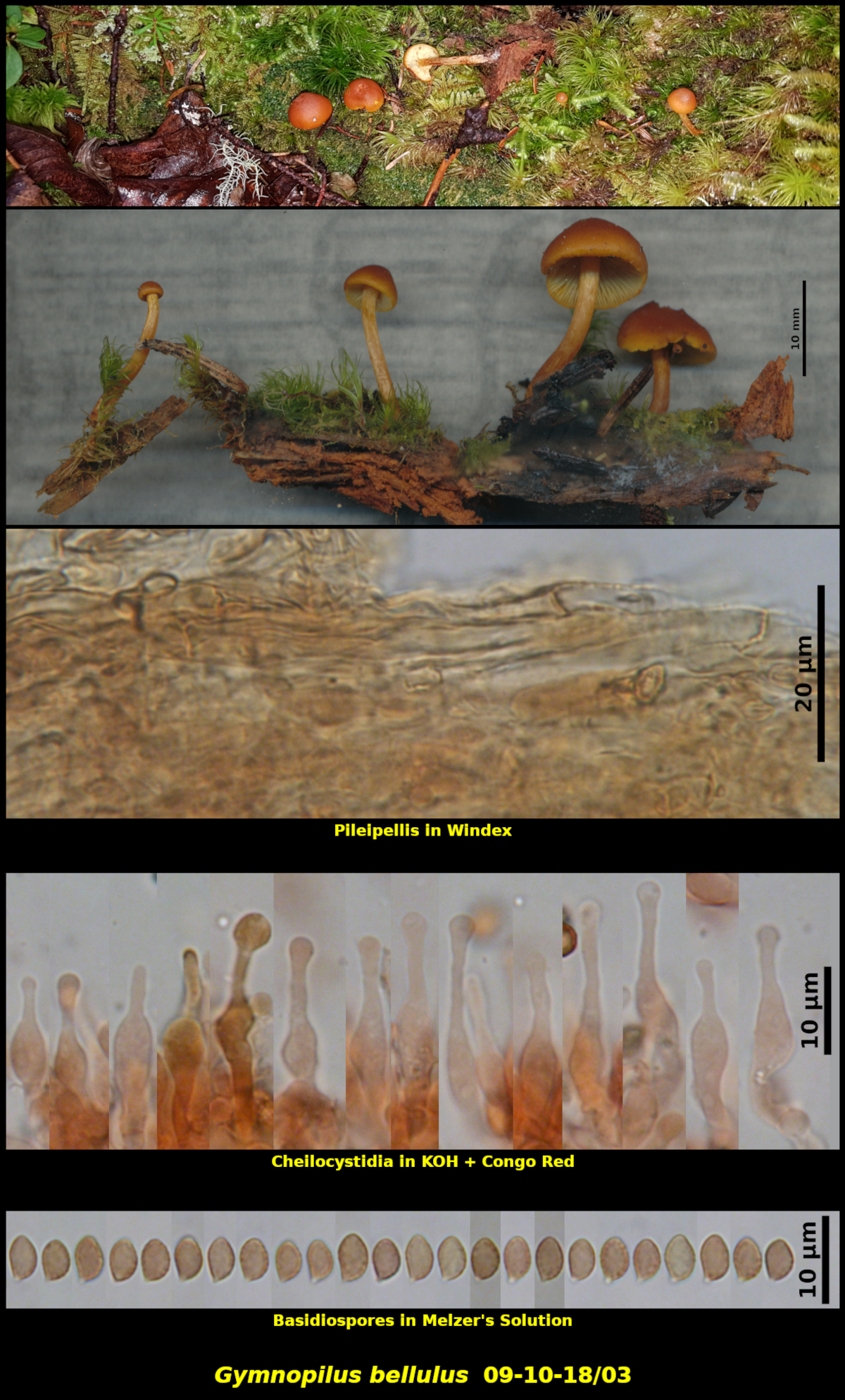Fleshy Fungi of New Brunswick >>
Gymnopilus bellulus
Gymnopilus bellulus (Peck) Murrill

Gregarious (5) in on highly rotted conifer log among mosses, associated with Abies balsamea – New River Beach Provincial Park, New Brunswick (09-10-18/03).
Pileus conical when young, conic-convex at maturity, dry, glabrous or with minute fibrils, bright orange brown (HSV30:80:80), 7-11 mm in diameter. Stipe equal, glabrous, orange (HSV40:60:90), dry, 13-23 X 1-2 mm. Lamellae bright orange-yellow (HSV52:40:100), close, adnexed, not marginate. Veil none (even on minute button). Flesh concolorous with the surface tissues, with a non-distictive odour, quite bitter in taste.
Basidiospores light orange brown in spore print, ovoid, usually with a conical apex, coarsely roughened, lacking a suprahilar plage, not initially changing colour in Melzer’s Solution but appearing to be dextrinoid after 24 hours, 4.5-6.1 x 2.9-3.6 μm, Q = 1.35-1.95 (average[55]: 4.9 x 3.2 μm, Q = 1.53). Cheilocystidia forming a continuous sterile margin, lecythiform to lageniform, usually with a subglobose to globose capitulum up to 4.3 μm in diameter, with a basal clamp connection, 17-28 x 2.5-4.7 μm. Pleurocystidia not seen. Basidia clavate, often with a constricted waist, 4-spored, with a basal clamp connection. Caulocystidia produced at the apex of the stipe, similar to the cheilocystidia, capitate. Pileipellis a cutis of brown, encrusted hyphae, with clamp connections at the septa.
A very small species of Gymnopilus characterized by its bright reddish brown pileus, yellow lamellae and bitter flesh. The very small basidiospores and lecythiform cheilocystdia are also diagnostic.
Photograph: D. Malloch (09-10-18/03).